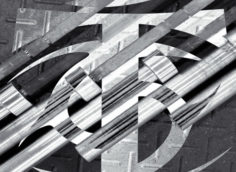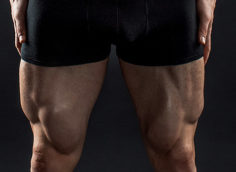A Common Problem
Allowing your grip position or hand placement to dictate your shoulder mechanics is an annoyingly common issue. This should never occur.
Proper scapulohumeral rhythm occurs in a very precise position and is dependent on keeping the shoulders retracted, depressed, and medially rotated, all while keeping the elbows tucked.
Anything other than this position for any upper body push or pull is simply wrong. Regardless of whether it's a wide-grip incline press, a reverse-grip bench press, or a simple dumbbell press, the elbows, shoulders, and scapular positioning will be nearly identical with little if any difference in pressing mechanics.
The same is true of any rowing movements, overhead presses, or pull-ups/pulldowns. Regardless of the grip width and placement, each variation across that particular movement pattern will be nearly identical in terms of movement mechanics and arthrokinematic joint positioning. In other words, as the hand position and grip changes, the shoulders and elbow position should remain constant.
This means that with an extremely wide grip the forearms will not be quite perpendicular to the floor as the hands will be slightly wider than the elbows. And while some lifters assume that maintaining a perpendicular arm position is necessary, this is only the case with more moderate grips.
Unfortunately, a very wide grip makes it impossible to maintain perpendicular joint segments without sacrificing neuromuscular recruitment and internal arthrokinematics (movement of joint surfaces). And because our bodies are highly complex living organisms and not mechanical robots constructed of individual segments, maintaining optimal neuromuscular recruitment patterns and internal arthrokinematics is more important than external kinematics.
Competitive powerlifters should use the widest grip they can handle that allows for their joint segments to line up perpendicularly, in conjunction with optimal shoulder mechanics and neuromuscular recruitment patterns. This grip placement is typically several inches (in each direction) beyond shoulder width as it's typically the most conducive for employing proper lat activation, scapula positioning, and elbow tuck.
However, many powerlifters find great success with more extreme grips as long as appropriate mechanics are applied. In fact, many of the top bench press powerlifters in the world including Scott Mendelson, Ryan Kennelly, Dave Hoff, and Hugene Rychlack use such a wide grip in competition, in conjunction with significant lat activation and elbow tuck (similar to a close-grip bench press), that their arm angles deviate significantly from perpendicular.
To incorporate perpendicular angles with their wide hand placement, they'd have to forfeit lat activation and allow significant elbow flare. Not only would this compromise their pressing power and intramuscular tension, but it would most likely result in an immediate pec tear.
Whether you decide to use a moderate grip or more extreme grip, hand placement shouldn't cause deviations in technique or neuromuscular recruitment. It's also important to point out that although many advanced lifters will strategically alter their body mechanics in conjunction with grip adjustments as a means for targeting different areas of a muscle group, this training philosophy can lead to dysfunctional movement patterns, inflammation, and injury.
Instead of altering joint mechanics to isolate a specific area, simply incorporate pre-exhaustion and pre-activation techniques as well as targeting the muscle from different angles, all while maintaining proper technique throughout the movements.




